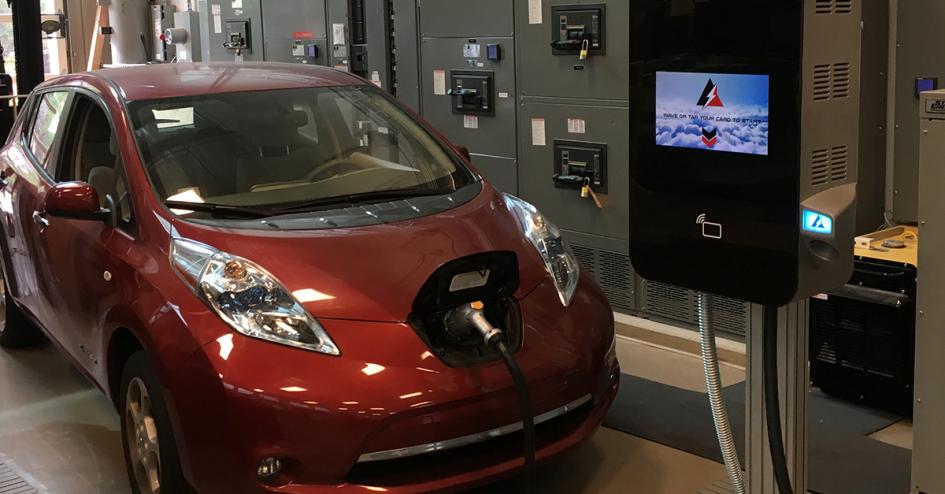
Imagine an electric vehicle charging experience that is just as accessible and convenient as gas fueling. It’s almost here. Researchers have used silicon carbide (SiC) technology to produce rapid charging EV stations that are 60 percent faster and one-tenth of the size of current versions, significantly lowering the barrier to entry for charging stations.
This breakthrough has emerged from a collaboration that includes North Carolina State University and PowerAmerica, a manufacturing innovation institute and member of the Manufacturing USA network. This development is made possible by medium-voltage fast charger (MVFC) technology that promises to revolutionize the recharging station and eliminate consumer anxiety about running out of power when driving an electric vehicle (EV).
The MVFC stations do not require as much infrastructure from utility companies and are about half the cost of existing stations, which will save money and time for charging station owners and vehicle owners. The MVFCs will be much easier to place in gas stations, retail parking lots and urban environments where space is at a premium.
Electronic device SiC prototypes have been around for more than 10 years, but PowerAmerica was able to achieve a breakthrough by determining how the MVFC could do the work of both a transformer and a fast charger, eliminating the need for bulky distribution transformers, which often weigh over 2,000 pounds and must rest on concrete slabs. The wide bandgap semiconductors enable the rapid EV chargers to connect directly to a medium-voltage line instead of a low-voltage line, eliminating conversion space and a step in the process, which makes the electric connection significantly more efficient.
PowerAmerica and its partners also are working on fast charging technology for larger batteries, which would have significant implications for fleet transportation.
This fast-charging station is an example of how advanced manufacturing increasingly plays a critical role in the U.S. innovation ecosystem, supporting U.S. technological competitiveness and driving product and process improvements that strengthen the U.S. economy.

